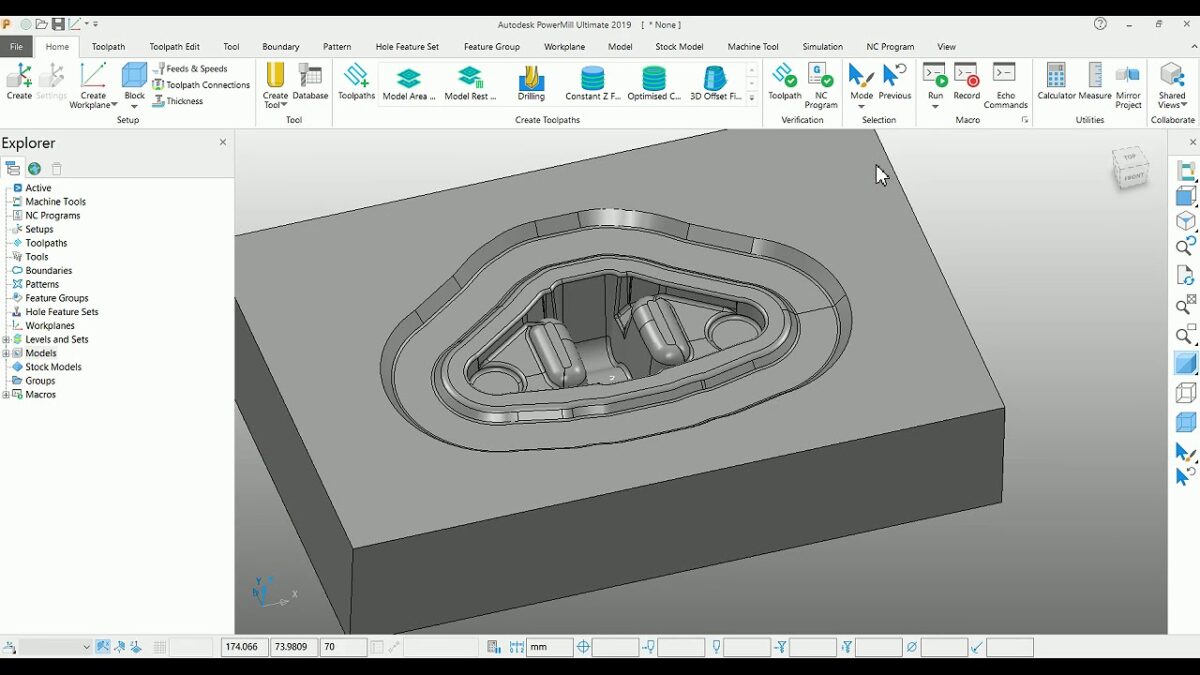In the dynamic world of CNC machining, the magic lies not just in the sophisticated machines and powerful software, but in the precise language of machining parameters. Defined within PowerMill Ultimate, these parameters dictate how the cutting tool interacts with the workpiece, influencing factors like material removal rate, surface finish, machining time, and ultimately, the success of the entire operation. This comprehensive guide delves into the world of machining parameters in PowerMill Ultimate, equipping you with the knowledge and techniques to speak the language of metal removal with confidence.
Understanding the Core Concepts: The Building Blocks of Efficiency
Machining parameters in PowerMill Ultimate encompass three fundamental elements:
Cutting Speed (Vc): Measured in meters per minute (m/min) or surface feet per minute (SFM), cutting speed defines the velocity at the periphery of the cutting tool as it rotates. This parameter significantly impacts factors like chip formation, tool wear, and surface finish.
Feed Rate (F): Measured in millimeters per minute (mm/min) or inches per minute (in/min), feed rate defines the rate at which the cutting tool advances into the workpiece material per unit of spindle rotation. It directly influences factors like chip size, cutting forces, and machining time.
Chip Load (Fc): Measured in millimeters per tooth (mm/tooth) or inches per tooth (in/tooth), chip load defines the thickness of the chip removed by each tooth of the cutting tool with each revolution. This parameter plays a crucial role in balancing material removal rate with tool wear and surface finish.
By understanding the interplay between these core parameters, you establish a solid foundation for defining effective machining strategies in PowerMill Ultimate.
PowerMill’s Parameter Playground: Setting Values with Confidence
PowerMill Ultimate offers various approaches to defining machining parameters:
Material Library: The software comes with a vast library of materials, each with recommended cutting speed, feed rate, and chip load ranges based on the specific material properties and the type of cutting tool being used. This serves as a valuable starting point for defining parameters.
Machining Calculator: PowerMill offers a built-in machining calculator that allows you to input specific material, tool geometry, and desired chip load to calculate the corresponding recommended cutting speed and feed rate. This functionality provides a more customized approach to parameter definition.
User-Defined Values: PowerMill empowers you to define your own cutting speed, feed rate, and chip load values based on experience, machining simulations, or specific project requirements. However, it’s crucial to stay within recommended ranges to avoid tool wear, excessive cutting forces, or poor surface finish.
Knowledge-Based Machining (KBM): For repetitive machining tasks, PowerMill’s KBM functionality allows you to define rules and logic for parameter selection. This automates parameter definition based on specific features or geometric conditions, streamlining the programming process for similar elements within your project.
Optimizing Your Parameter Choices: Considerations for Efficiency and Quality
While PowerMill provides recommendations and functionalities for defining machining parameters, here are some key considerations for optimization:
Material Properties: Different materials have varying degrees of hardness, ductility, and machinability. Always consider the material properties when defining parameters. For instance, harder materials might require lower cutting speeds and higher feed rates to manage tool wear.
Cutting Tool Geometry: The type, size, and geometry of the cutting tool significantly influence the choice of parameters. Smaller diameter tools generally require lower cutting speeds to avoid excessive deflection. Additionally, consider the number of flutes on the tool – more flutes allow for higher feed rates due to improved chip evacuation.
Desired Surface Finish: For a smooth surface finish, prioritize lower feed rates and smaller chip loads. Conversely, if material removal rate is a primary concern, you might opt for higher feed rates and larger chip loads, potentially sacrificing some degree of surface finish.
Machine Capabilities: Ensure the chosen parameters are within the capabilities of your CNC machine. Consider factors like the machine’s maximum spindle speed and feed rate limitations.
Machining Time vs. Tool Wear: There’s a trade-off between maximizing material removal rate (higher feed rates) and minimizing tool wear (lower feed rates). Finding the optimal balance is crucial for efficient and cost-effective machining.
By carefully considering these factors, you can refine your parameter choices in PowerMill Ultimate to achieve the desired balance between machining efficiency, surface finish, and tool life.
